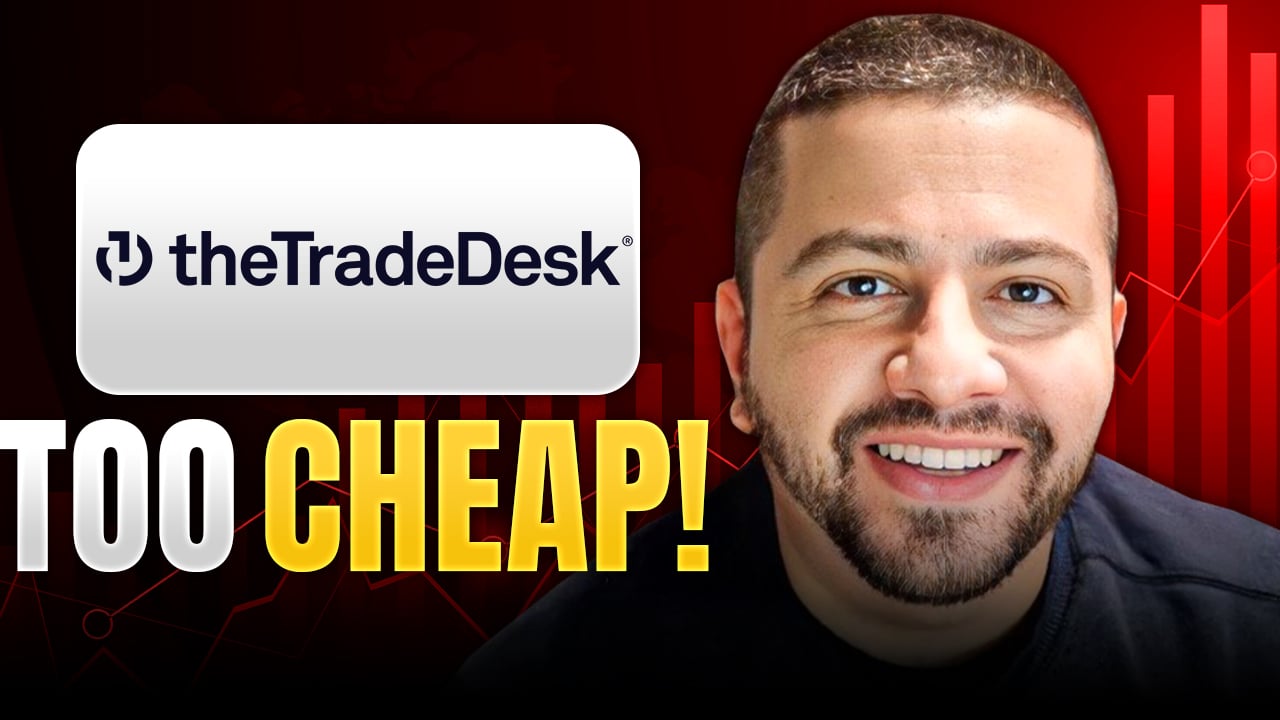The Trade Desk (TTD +1.70%) had its worst day as a public company on Friday, Aug. 8. Shares dropped nearly 40% as investors processed second-quarter financial results, the departure of CFO Alex Kayyal, and a cautious outlook due to tariff uncertainty.
Most Wall Street analysts think the market overreacted. The Trade Desk still has a median target price of $80 per share, which implies 48% upside from its current share price of $54. However, forecasts range from $45 per share at the low end (implying 17% downside) to $135 per share at the high end (implying 150% upside).
Here's what investors should know before buying the post-earnings dip.

Image source: Getty Images.
The Trade Desk's independence differentiates it from Amazon, Google, and Meta Platforms
The Trade Desk operates the leading independent demand-side platform (DSP), a type of adtech software that helps media buyers plan, measure, and optimize advertising campaigns across digital channels. Its platform leans on artificial intelligence to help clients manage budgets, customize bids, and dynamically target consumers.
The Trade Desk's independence -- meaning it does not own media content that might bias ad spending on its platform -- distinguishes it from larger competitors, such as Alphabet's Google, Meta Platforms, and Amazon. Those companies have a clear incentive to steer media buyers toward their own ad inventory on websites like Google Search and Instagram, which creates a conflict of interest. In other words, The Trade Desk is more transparent.
The company's independence has allowed it to form a number of critical partnerships. It sources ad inventory from streaming platforms Netflix, Roku, Walt Disney, and Spotify. It sources data from retailers Albertsons, Target, and Walmart. That creates opportunities brands cannot find on other platforms, such that The Trade Desk has become a leader in connected TV (CTV) advertising and a formidable player in retail advertising.
Importantly, the company has consistently taken market share in digital advertising, and CEO Jeff Green believes that trend will continue for the foreseeable future. That sets The Trade Desk up for solid growth in years to come. Adtech spending is projected to increase at 14% annually through 2030, according to Grand View Research.

NASDAQ: TTD
Key Data Points
The Trade Desk reported slowing growth in the second quarter and gave weak guidance that unsettled investors
Despite the sharp decline in the stock, The Trade Desk actually reported reasonably good second-quarter financial results that beat estimates on the top and bottom lines. Revenue rose 19% to $694 million, and non-GAAP (generally accepted accounting principles) net income jumped 5% to $0.41 per diluted share. "With our leadership in CTV as well as other areas such as retail media, digital audio, identity, measurement, and data, we are winning more business," said CEO Jeff Green.
Nevertheless, investors were clearly concerned about slowing growth, particularly because larger competitors delivered stronger results. Meta Platforms and Amazon said advertising revenue increased 21% and 23%, respectively, in the second quarter. The Trade Desk has historically outpaced its largest rivals, so the latest report raises questions about its ability to do so in the future.
That is particularly true because the company provided weak guidance for the third quarter. Management says revenue will increase by 14% to $717 million, and adjusted earnings before interest, taxes, depreciation, and amortization (EBITDA) will increase 8% to $277 million. But newly appointed CFO Laura Schenkein said actual results could be worse if tariff uncertainty leads to a less favorable economic environment. That gloomy outlook caused the stock to plunge nearly 40% following the report.
Bank of America analyst Jessica Ehrlich downgraded the stock to hold and slashed her target price to $55 per share (down from $130 per share). She still thinks The Trade Desk's revenue will increase at a double-digit pace in the future, but no longer believes a premium valuation is justified because the company is losing momentum. MoffettNathanson also downgraded the stock to sell for similar reasons, slashing its target price to $45 per share.
What Wall Street expects from The Trade Desk in the coming quarters
The Trade Desk's second-quarter report raised questions about its ability to grow revenue faster than 20% annually, and Wall Street analysts are clearly divided on the issue. The company reorganized its sales team earlier this year after missing its own guidance in the fourth quarter for the first time in 33 quarters. Growth could reaccelerate as those changes improve workflows, especially once tariff uncertainty dissipates.
Regardless, Wall Street currently estimates The Trade Desk's adjusted earnings will increase by 14% annually through 2026. That forecast makes the current valuation of 31 times adjusted earnings look tolerable, and it leaves room for upside if the company manages a material reacceleration in sales growth in the future. To that end, patient investors should consider buying the stock on the post-earnings dip.





